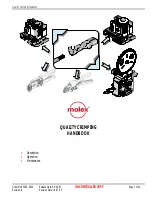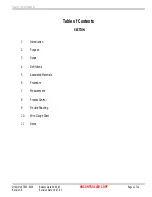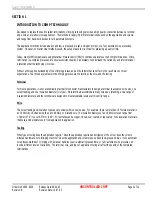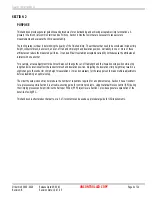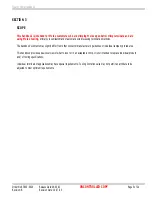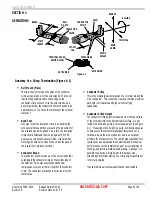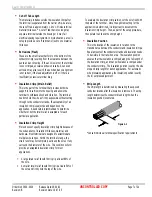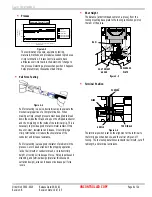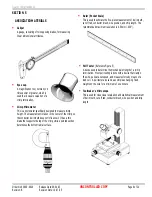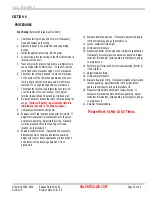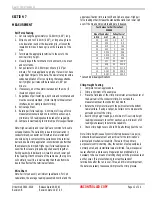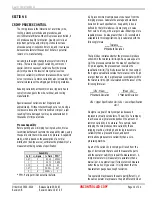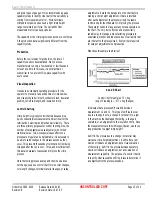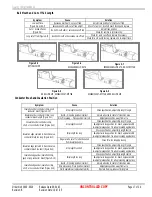
Quality Crimp Handbook
Order No 63800-0029
Release Date:09-04-03
UNCONTROLLED COPY
Page 3 of 24
Revision: B
Revision Date: 10-07-05
SECTION 1
INTRODUCTION TO CRIMP TECHNOLOGY
Developed to replace the need to solder terminations, crimping technology provides a high quality connection between a terminal
and a wire at a relatively low applied cost. The methods for applying crimp terminations depend on the application and volume,
and range from hand-held devices to fully automated systems.
The application methods include a basic hand tool, a press and die set, a stripper crimper, or a fully automatic wire processing
system. However, no matter what method is used, the setup of each tool is critical for achieving a quality crimp.
Today, many OEM companies are using Statistical Process Control (SPC) to continuously improve their crimp terminations. Crimp
termination is a complex process and to ensure consistent quality it is necessary to understand the variability and inter-relational
interactions that the technology involves.
Without a thorough understanding of the crimping process, and all the factors that can affect it, the result may not meet
expectations. The three key elements in the crimping process are the terminal, the wire, and the tooling.
Terminal
For most applications, it is not economically practical for connector manufacturers to design a terminal to accept one wire size, one
wire stranding, and one insulation diameter (UL type). Most terminals accommodate many wire sizes, stranding, and a range of
insulation diameters, and the terminals are designed to meet acceptable levels over this entire range.
Wire
The wire stranding and insulation type can vary widely within one wire size. For example, there is more than 18% more material in
an 18 AWG by 19-strand wire than an 18 AWG by 16-strand wire. The insulation diameter of an 18 AWG wire can range from
1.78mm (070") to over 4.57mm (180"). Wire strands can be copper, tinned, over coated, or top coated. Wire insulation materials,
thickness, and durometers vary from application to application.
Tooling
What type of tooling does the application require? Does the application require hand stripping of the wire or does the volume
dictate an automatic wire-stripping machine? Does the application and volume require hand tools, press and die, or fully automatic
wire process machines? Crimping with a manual hand tool, semi-automatic press and die, or fully automatic wire processor, all
involve different levels of variability. The terminal, wire, and type of application tooling all affect the quality of the completed
terminations.


